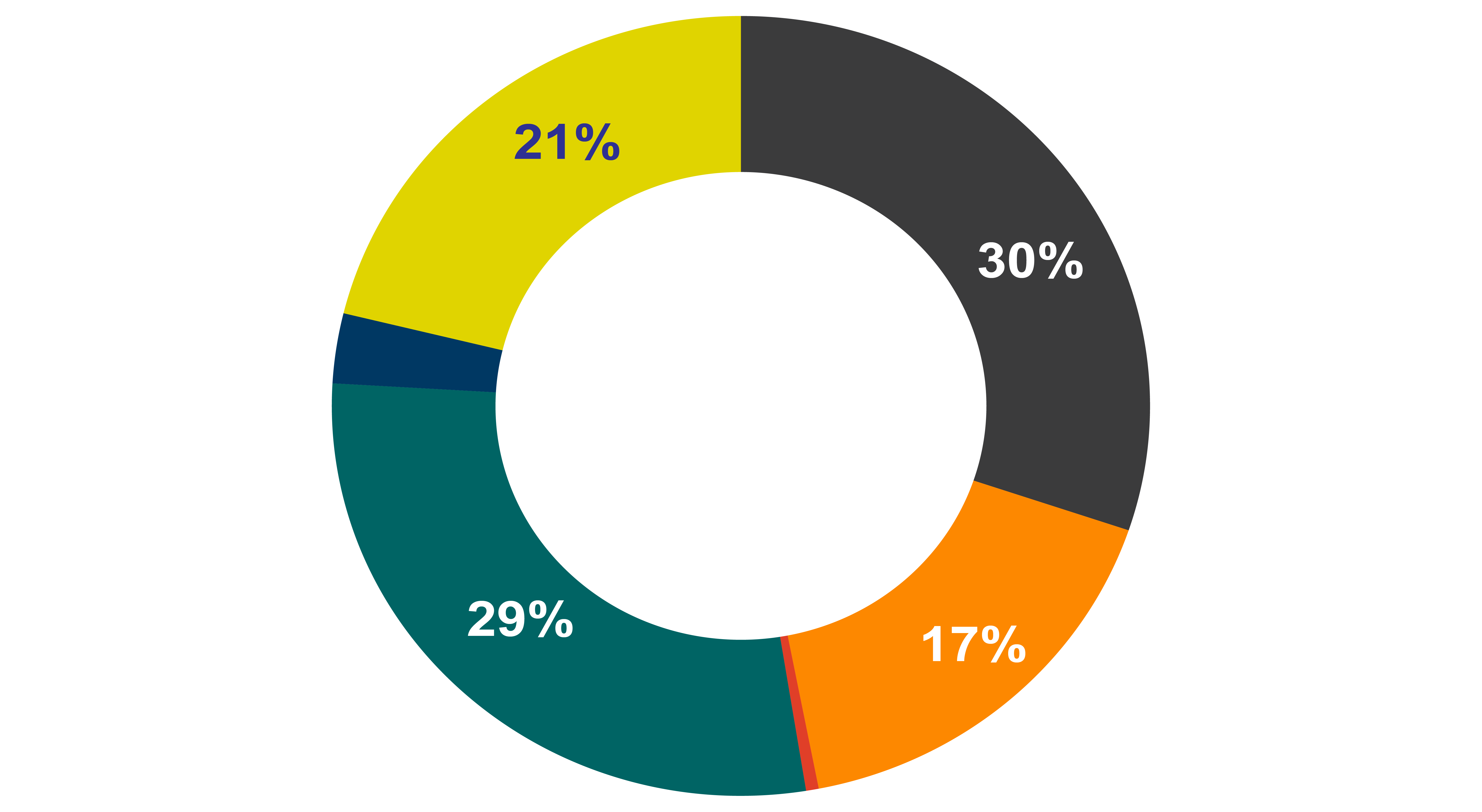
14 Dec 2021, highest share of renewables in a day
14 December 2021 9:30 – 10:00 am
The interval with highest percentage of renewables is during the day as abundant rooftop solar and wind combine.

Sustainably Renewable
The energy transformation is happening all around us. Driven by households and industry, and supported by government, the way we generate electricity and the way we consume electricity is transforming.
Over the last few years, the increase in renewable power on the South West Interconnected System has been dramatic.
We are now sourcing more than 30% of our power from renewables – a very different picture to 2010, when we had just started to see renewables come online as an energy resource.
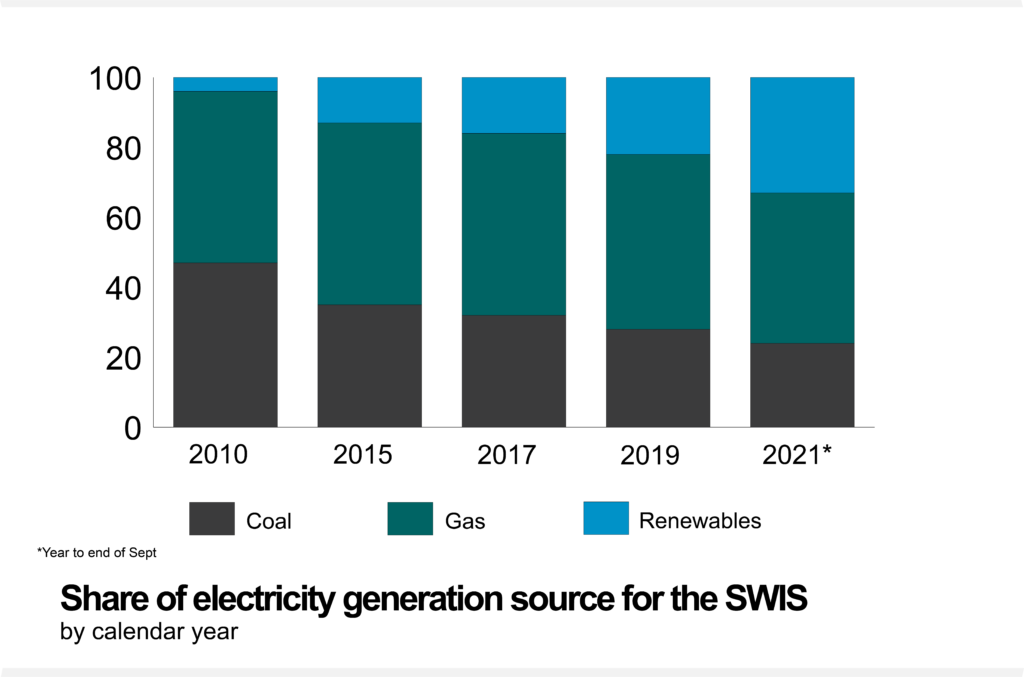
Of the 30% renewable energy used in our system over a year, wind contributes 52%. Solar is the second largest contributor with rooftop solar making up 41.4% and large solar farms adding an extra 4.9%. The remaining share of renewable energy used across the year is sourced from landfill gas.
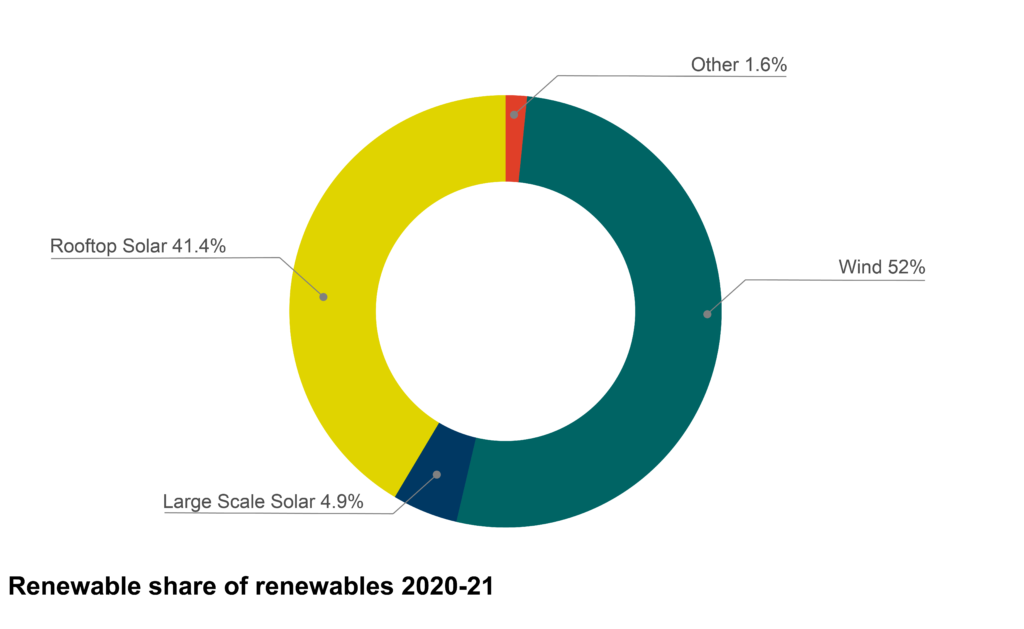
Renewable energy power generation output can be strongly linked to the weather conditions at the time. This can mean that some days there is more renewable energy than others, and there can be different trends across the seasons.

*Source OpenNEM.

14 Dec 2021, highest share of renewables in a day
14 December 2021 9:30 – 10:00 am
The interval with highest percentage of renewables is during the day as abundant rooftop solar and wind combine.
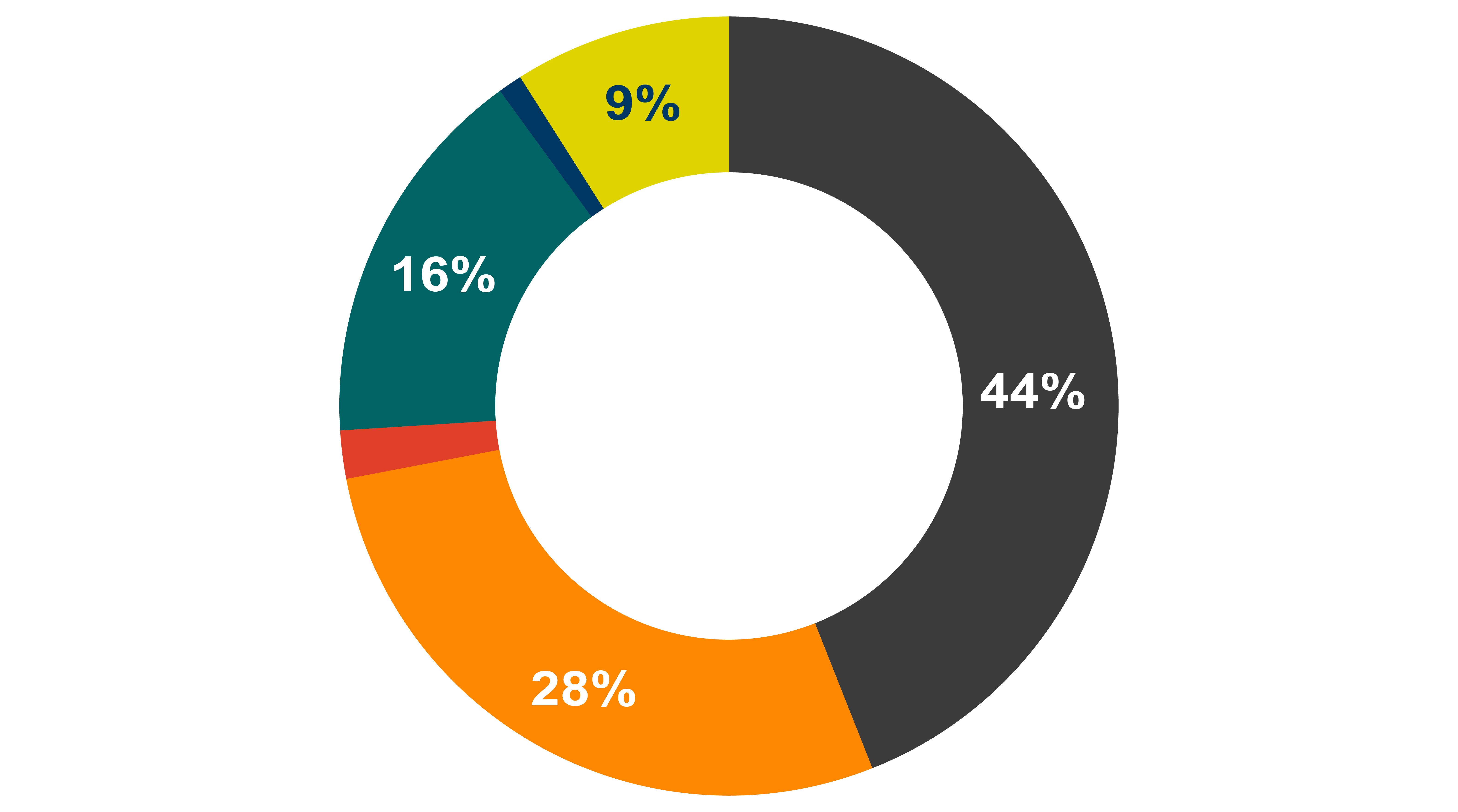
Share of renewables used across the three months of September, October and November 2021
3 December 2021 1:30 – 2:00 am
At night wind generation is the main source of renewables
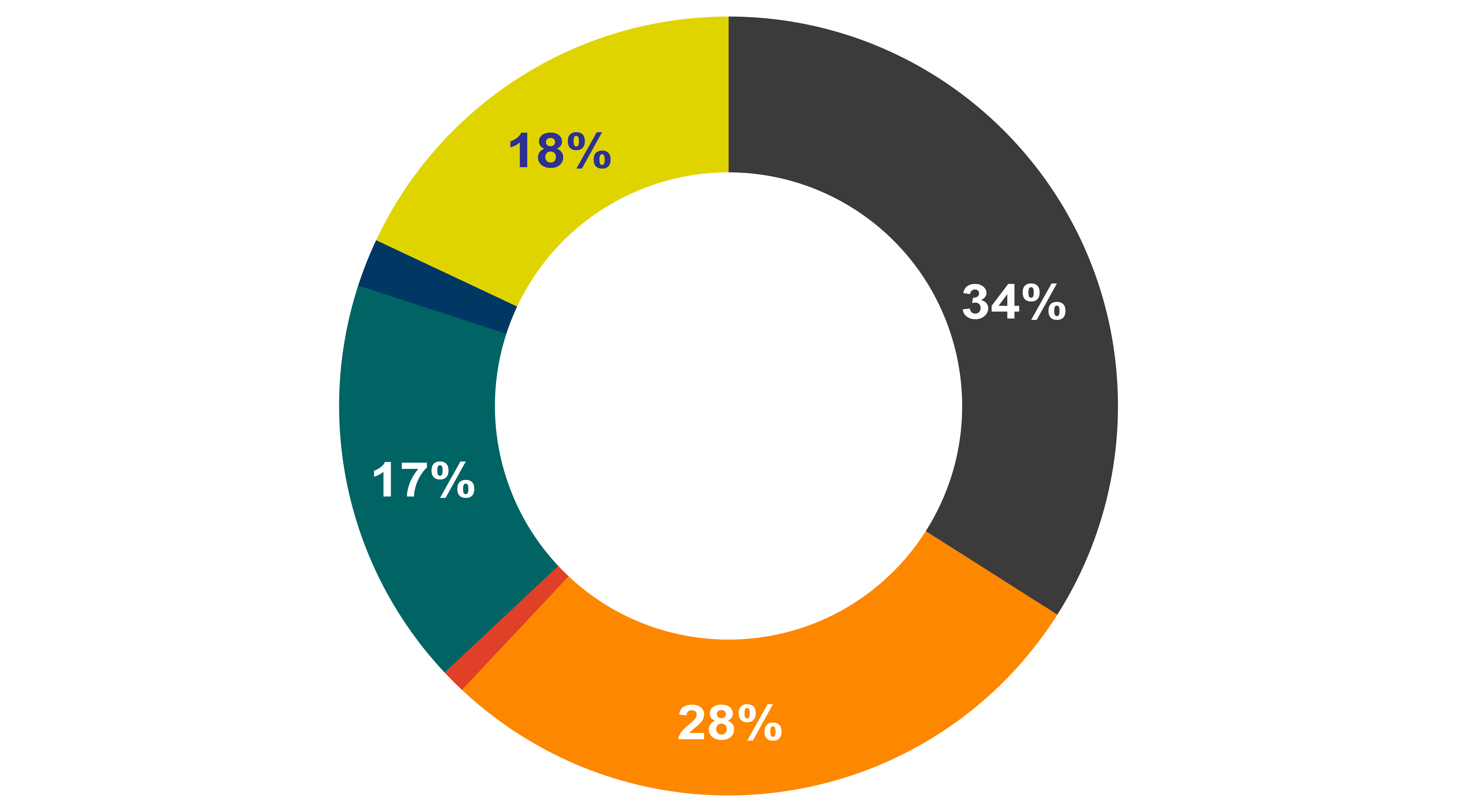
We’ve reached 30% of all power on the grid being renewable over a year, and 53% in the highest renewable day, but there are periods when it has been much higher than that.
Power production is monitored across every half-hour ‘interval’ of the day and night. As more and more renewables contribute to our electricity mix, the timing of the supply becomes increasingly important.
In any one interval, renewable power has made up more than 80% of the electricity being used.
Solar power has made up the greatest share during the day, and at night, wind has been the highest renewable contributor.
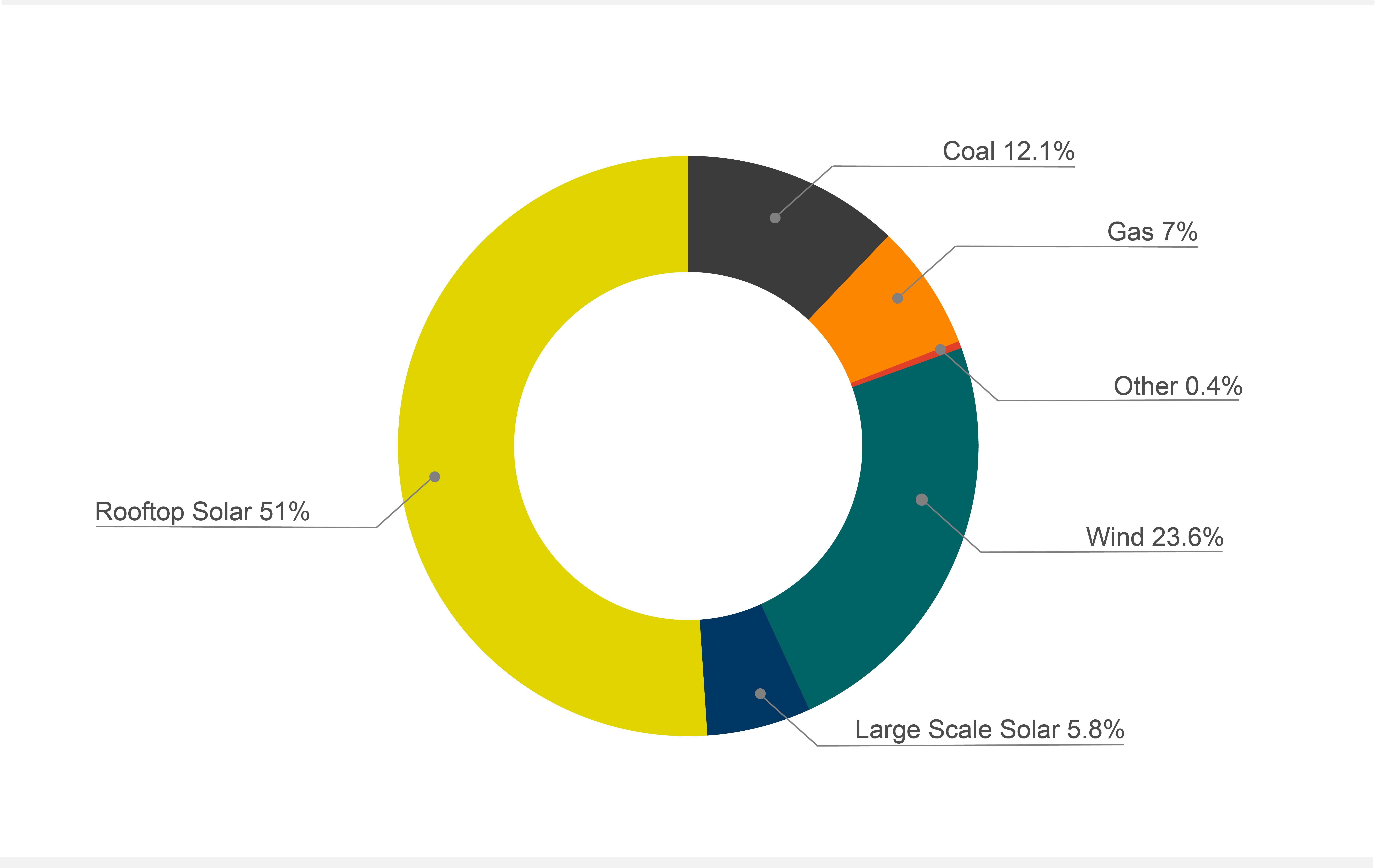
80% Renewables
12 December 2021 9:30-10:00am
The interval with highest percentage of renewables is during the day as abundant rooftop solar and wind combine.
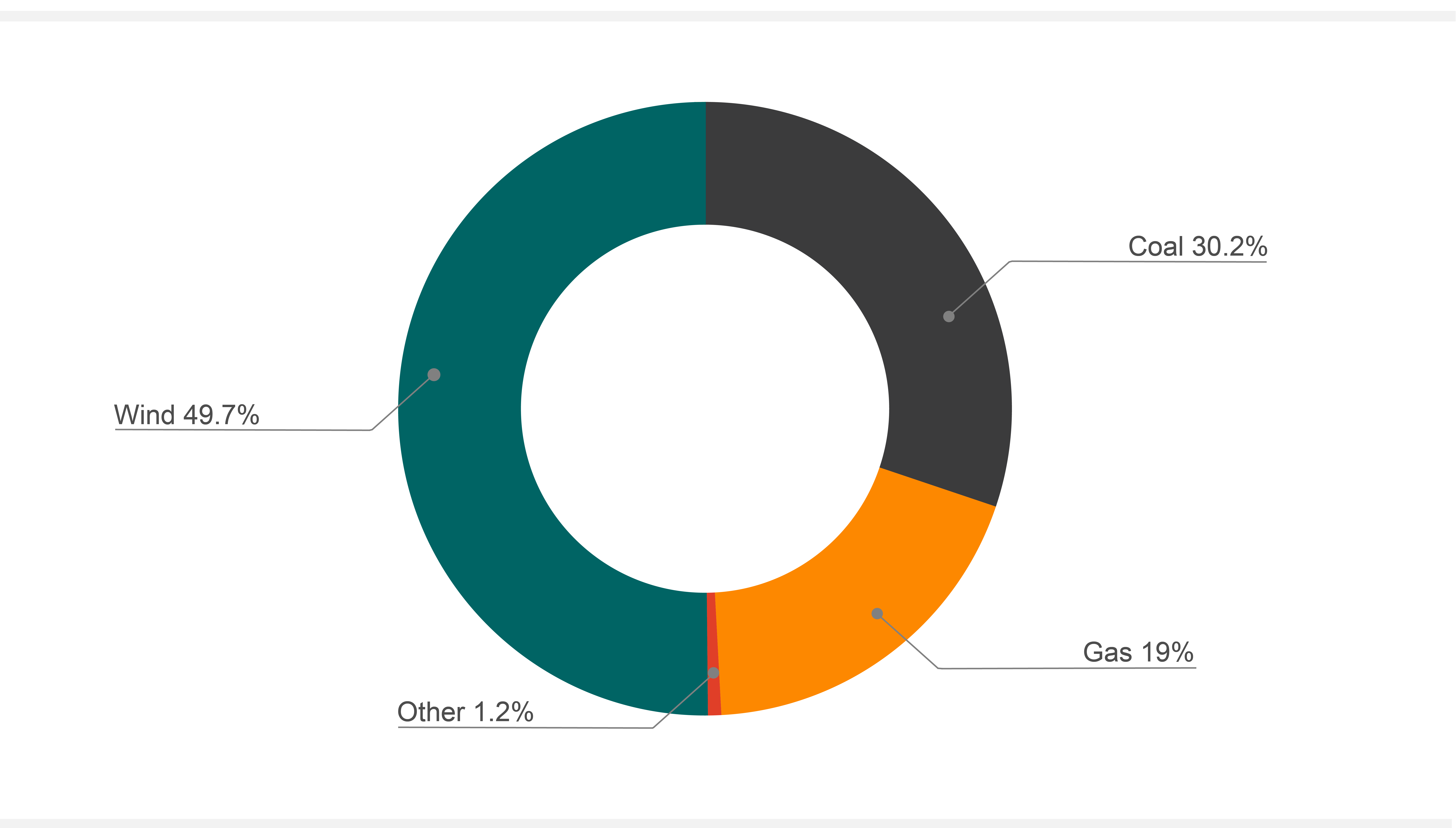
50.8% Renewables
3 December 2021 1:30-2:00am
At night wind generation is the main source of renewables.
There is a lot of information available about the take up of renewables. These frequently asked questions might shed some light on the different perspectives you may see.
We’re transforming to a higher renewable future. Thermal generators such as coal and gas are still required to meet demand at peak times. Thermal generation also provides valuable services to the system that the transformation processes will look to replicate in time.
Synergy are currently constructing the first large battery in the South West Interconnected System. Once online, the amount, and when the battery is charging and discharging will be recorded in the various data sources available.
Renewables energy can be quantified by generation or capacity.
Capacity is measured in mega Watts (or MW) and measures how much power is able to be produced at any point in time.
Generation is measured in kilowatt-hours (kWh) or megawatt-hours (MWh). This is the energy produced or used in the system over time. Units of energy (such as kWh) are how electricity is measured and billed for consumers.
Track power production in the South West Interconnected System live (*excludes rooftop solar).
Tracking power production in the South West Interconnected System, including rooftop solar estimates.